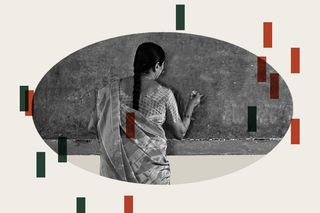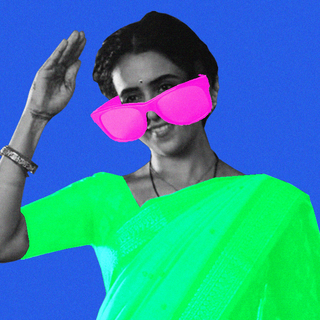
Kerala Govt Supports Lecturer Who Refused ‘Dress Code’ of Wearing Sarees to Work
To ask female educators to dress “like a professional” bears mentioning that no such sartorial rule exists for male teachers in most states.

The Kerala government recently put out an official circular backing college teachers’ right to wear what they want. The policy was reasserted officially after a teacher was asked to wear sarees (she was wearing a kurta and leggings) if she wants to continue at the institution.
“The government has already made clear its stance in this regard multiple times. Teachers have every right to dress as per their comfort in Kerala regardless of the kind of institutes they work at. This practice of imposing saree on our teachers is not conducive to Kerala’s progressive attitude,” the state’s Higher Education minister R. Bindu said in a statement.
Sartorial policing often happens through unwritten channels. The Kerala government issued a government circular in 2008 clarifying that saree is not mandatory workwear — effectively giving teachers the right to wear churidar and salwar on duty. In the current case, the young lecturer from Kodungaloor, Kerala, wore churidars to the college. She was offered a position and was asked to wear a sari as a requisite; but she told the authorities she didn’t own a sari and didn’t know how to drape one. Despite having necessary qualifications, the authorities insisted on this dress code if she wanted to continue working at the institution. The lecturer then declined the position.
The sartorial question is not semantic that can be easily overlooked or accepted as an occupational hazard. Like any other outfit, wearing a saree should be a matter of convenience. Even before, teachers have protested any dress code requirements because of the discomfort and the time it takes to drape a saree in the morning.”
“Many teachers feel uncomfortable wearing a saree when they are conducting activity-based classes or writing on top of a blackboard as it exposes the midriff,” Meena, a government school teacher in Salem, told Times of India.
But they backed down due to the fear of losing jobs. For others, it may mean missing out on opportunities or choosing convenience and personal rights over going by institutional dogmas.
“While a teacher has several responsibilities, adhering to such outdated and obsolete ideas is not one of them. One’s choice of dressing is an entirely personal matter. No one has the right to criticize or interfere in another’s sartorial choices,” Bindu noted.
Related on The Swaddle:
From Teachers to Textbooks: Gender Stereotypes in Indian Schools
Clinging to the “saree rule” is the result of multiple cogs. One is the lack of clarity in the government’s mandate pertaining to the dress code. In 2012, the Tamil Nadu government asked teachers to adhere to an “appropriate dress code” — without ever defining what “appropriate” is. Eventually, government authorities and private schools interpreted it as an “only saree” policy for women teachers.
In 2008, seven female teachers in West Bengal filed a plea noting they were asked to wear only white sarees –lest they would not be allowed into classrooms. The Calcutta High Court later ruled such a policy violates personal liberty, more so because the state government had no policy around this. On similar lines, teachers from Trichy made a petition to allow women teachers to wear churidar kameez. The Tamil Nadu government rejected the demand, arguing “it was a matter of government policy and that there was no scope in the rules to make changes.“ The ambiguity in the government’s mandate becomes a loophole to reinforce biases.
Perhaps what allows unwritten policies such as these to thrive is the nexus of moral policing and gender stereotypes. The idea of teachers dressing “modestly” so as not to distract students is asserted in the name of protecting “traditions” and “dignity.” “[Schools] stopped short of issuing a circular, but verbally instructed the principal to follow the ‘tradition,'” The New Indian Express noted in a 2018 report. In 2019, the Tamil Nadu government discouraged teachers from wearing any “fashionable” attire to protect the culture. Those who don’t explicitly say “tradition,” argue that the saree rule is necessary to distinguish between teachers and students. It bears mentioning that no such sartorial rule exists for male teachers in most states.
It is a complex ask to ask female teachers to dress “like a professional.” Some would rightly argue that churidar suits are also professional wear, negating the argument. It then boils down to dictating what a female teacher should wear, tacitly infringing their bodily space and freedom. The cultural norm around dictating what a woman should and shouldn’t wear rears its ugly head here too. Arguably, any dress code that disrupts one’s convenience and shrinks one’s freedom also impacts self-esteem, morale, and identity. As the circular stated: “The attempts to exercise unnecessary control over teachers in the name of outdated moral ideals cannot be entertained at any cost.”
What one wears at work then becomes a signifier of how much freedom one has. The protests against mandatory saree-wearing are important to protect teachers’ autonomy — within and beyond the classroom. This makes the “right to dress” unequivocally important.
As Vimala Ramachandran of the National University of Educational Planning and Administration told Times of India, “Imposing any kind of dress code is irrelevant and ridiculous.”
Saumya Kalia is an Associate Editor at The Swaddle. Her journalism and writing explore issues of social justice, digital sub-cultures, media ecosystem, literature, and memory as they cut across socio-cultural periods. You can reach her at @Saumya_Kalia.
Related


Woe Is Me! “My Activism Is Taking a Toll on My Mental Health. How Do I Cope?”
